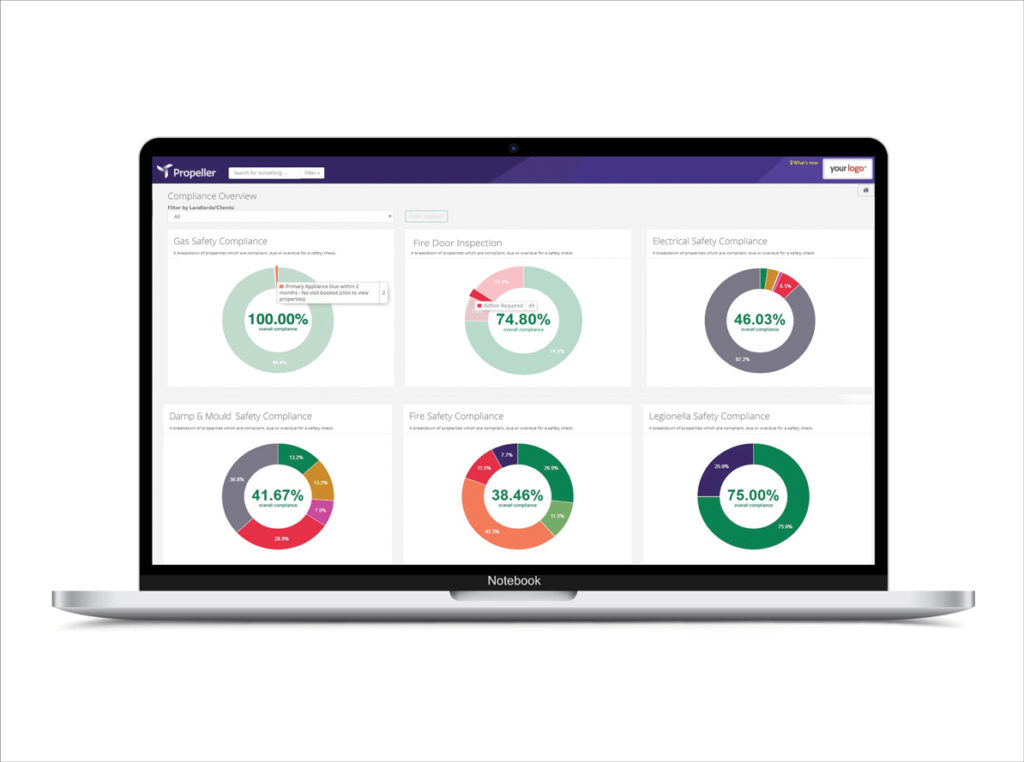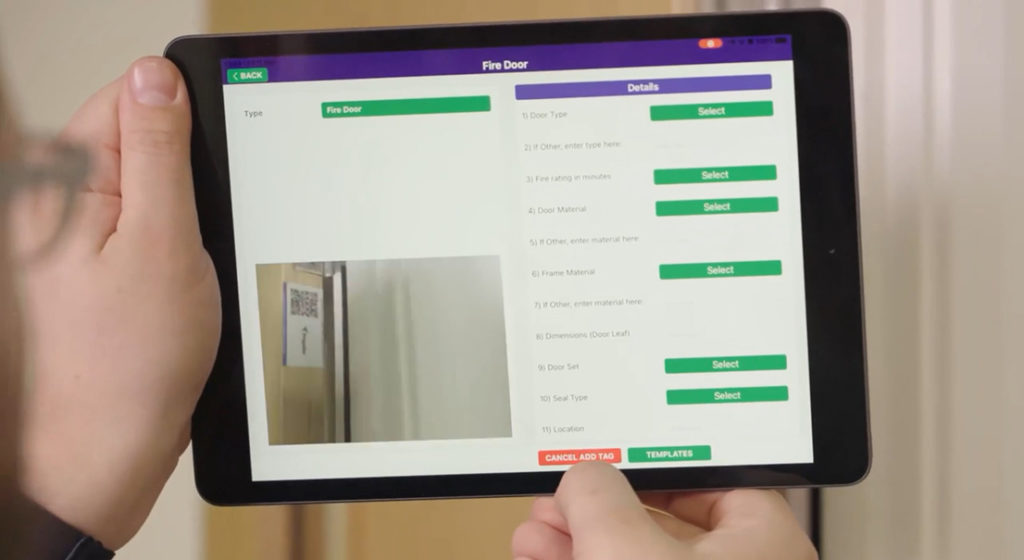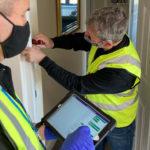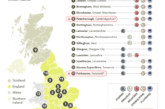Dave Carr, Managing Director of Propeller Powered, explains how advanced software is enabling housing providers to inspect fire doors quickly and effectively in line with new regulations.
For the owners or managers of multi-occupied residential buildings over 11m, new regulations on fire door checks present a huge challenge. Enforced in January 2023, the Fire Safety (England) Regulations 2022 require the ‘responsible person’ to conduct quarterly checks on communal doors that lead onto common areas like hallways, and annual inspections on flat entrance doors. Evidence of the steps taken to comply with the regulations must also be recorded.
For housing associations and local authorities, the rules present a steep path to compliance. Ensuring fire doors are safe is critical, but with dozens of doors to check even in small housing blocks, the scale of the task can’t be underestimated. Relying on manual processes such as spreadsheets and paper forms for inspections will present a huge administrative burden that swallows significant time and resources while risking human error.
In response, new technology has been fast tracked specifically for the social housing sector. This cloud-based software allows fire door maintenance and inspection programmes to be managed digitally. Pilots have shown this process can help to conduct the checks up to six times faster than manual systems.
Keeping it simple
Integrating new software may be perceived as a complex task but that’s not the case. The first step is for a housing provider to identify, collate and register the appropriate door data. This should be focused purely on what is needed to meet the new regulations and future maintenance and reporting processes.
A software provider can help to advise on these data requirements for approval by a housing provider’s building safety specialist. Often this data collection process is more straightforward than organisations realise as does not require the same administrative procedures as BM TRADA certifications for example.

An auditable trail
Using an App, fire door inspections can be carried out quickly and effectively either by in-house teams or external contractors, with training supplied by the software provider. Time stamped photographs can be recorded along with the door’s attributes such as type, material and fire rating. Any defects can be instantly captured and the information logged on a central dashboard in real time.
This data is analysed by the software enabling the housing provider to establish which doors are non compliant or require remedial work. Actions for repairing or replacing doors can also be recorded and prioritised. The same dashboard can be used for scheduling, allowing the frequency of inspections to be set and adjusted to comply with the regulations and meet an organisation’s own building safety criteria.
At the heart of the software is QR code technology which gives every fire door a unique asset tag, further simplifying the inspection process. Using a mobile device, each code can be scanned to reveal the door’s location, condition and full maintenance history.
The QR codes are also key to increasing building safety transparency and communication regarding fire doors. Residents can use the codes to access vital safety information about a fire door and instantly raise any specific issues directly to the housing provider. Photographs can be uploaded, triggering automated tasks that are flagged for action.
LiveWest is one example of a housing association that has adopted software to proactively respond to the new regulations. This has seen the organisation set up QR codes, update its system to record actions for doors and use a dashboard to assess which ones need to be upgraded or replaced to achieve compliance. Its existing repairs system has set servicing schedules based on priorities identified via the software and plans have been put in place to inspect all 22,960 doors over the next two years.
These include communal and flat doors in buildings less than 11m high to go over and above the regulatory requirements.
 Seamless integration
Seamless integration
New software for fire door inspection is usually provided by the vendor as true Software as a Service (SaaS). That means it does not require an internal IT team to implement nor does it have to integrate with existing IT systems.
The latest software can be rolled out in as little as two weeks and requires minimal training, so there is no need to source technical experts or specialists to achieve compliance. It can be tailored to an organisation’s specific policies, enabling it to be used by social landlords of any size or external contractors, including fire safety specialists and M&E contractors seeking to expand their services into fire door inspections.
To prevent delays, housing providers are also advised to consider access as part of the digital inspection process as both sides of the door will need to be assessed. This may require a system similar to gas safety checks, which involves appointment letters and notices to demonstrate how and when access has been attempted.
Driving efficiency
The simplicity of new technology means a door can be asset tagged, scanned, inspected and registered within five minutes, saving significant time and labour costs. Housing providers can generate further efficiencies by tailoring the software with additional functions. For example, other areas of compliance including gas, electrical, and legionella can be incorporated into the same system bringing all key data into one place, eliminating the need for multiple systems.
No access visits can also be recorded using the App, evidencing the number of attempts to survey a flat door for vital safety checks.
Taking action
Although the Fire Safety (England) Regulations 2022 have been in force for more than six months, there is still time for local authorities and housing associations to respond. Adopting advanced software can provide a quick and effective solution which tackles the challenge head on. Not only will the technology save housing providers’ significant time but provide a robust, auditable register and an enhanced
service for residents.










